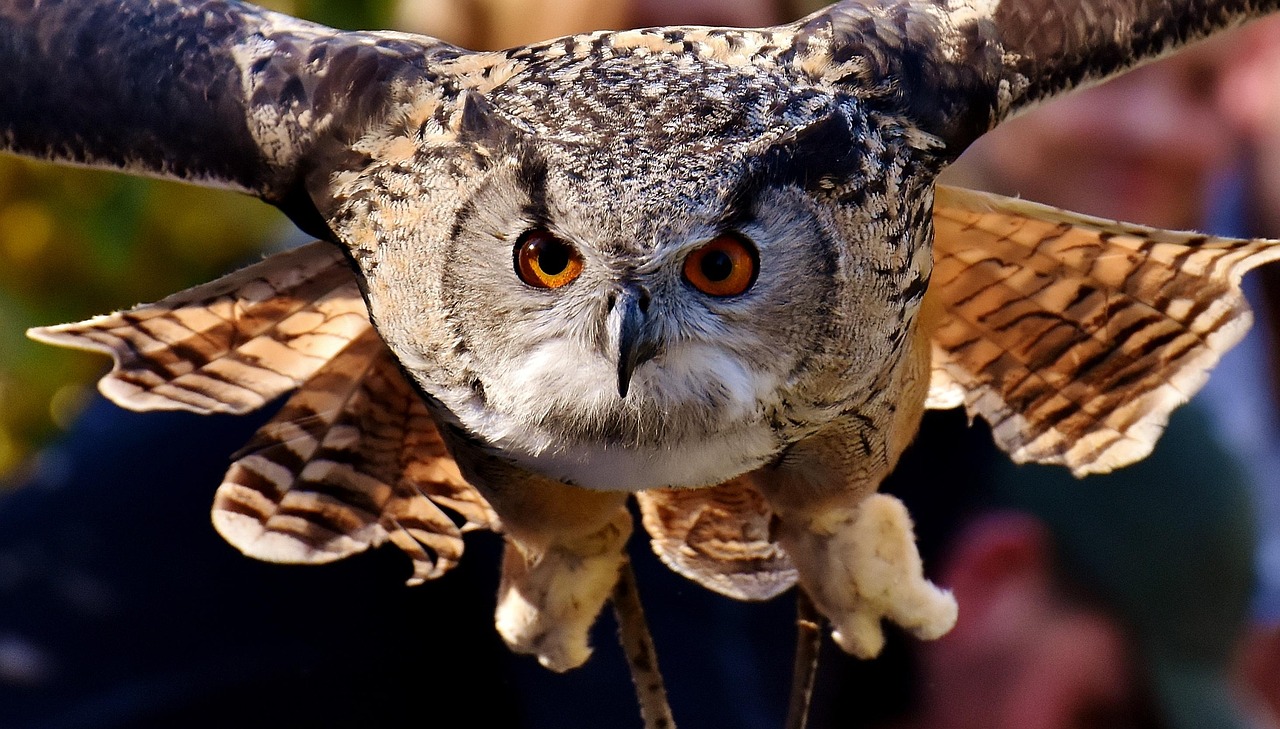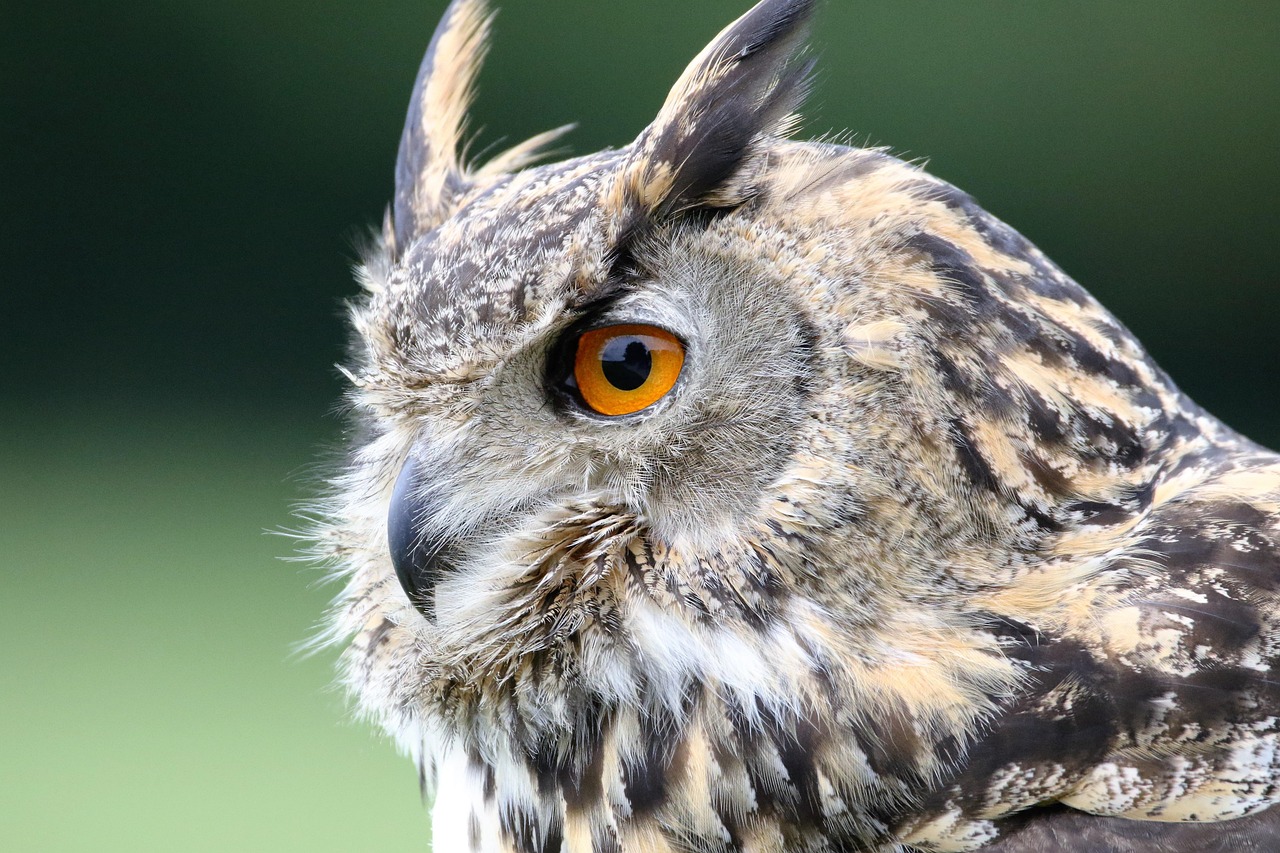Owls have long captivated human imagination with their enigmatic presence and unparalleled nocturnal prowess. Their ability to navigate the darkest nights with precision is not just a matter of folklore but a testament to a series of remarkable adaptations. Let’s delve into six fascinating secrets behind their extraordinary night vision.
Enormous Eyes: Nature’s Night Vision Goggles
Owls possess disproportionately large eyes, accounting for up to 5% of their body weight. This significant size allows them to gather ample light, essential for seeing in low-light conditions. Unlike human eyes, which are spherical, owl eyes are elongated tubes fixed in their sockets, providing a larger retinal image and enhancing their ability to detect prey in the dark. However, this fixed position means owls cannot move their eyes; instead, they rotate their heads to change their field of vision. This adaptation ensures they can focus intently on their surroundings without the need for eye movement. Their large eyes are a primary factor in their exceptional night vision capabilities.
Binocular Vision: Depth Perception Masters
Positioned at the front of their heads, owl eyes provide a wide field of binocular vision, with an overlap of about 50–70%. This arrangement grants them superior depth perception, crucial for accurately judging distances when hunting. While many birds have eyes on the sides of their heads, giving them a broader field of view, owls’ forward-facing eyes allow them to focus intensely on their prey. This binocular vision is especially beneficial in low-light environments, where precise depth perception can mean the difference between a successful hunt and an empty stomach. Their ability to gauge distances accurately ensures they can swoop down on prey with remarkable precision. This depth perception is a key component of their hunting success.
High Rod Density: Masters of Low-Light Vision

The retina of an owl’s eye is densely packed with rod cells, which are sensitive to light and movement. In fact, owls have about 30 rods for every cone cell, compared to humans, who have a ratio of about 20 rods to one cone. This high rod density enhances their ability to see in dim conditions, allowing them to detect the slightest movements of prey during the night. While this adaptation means owls have limited color vision, it provides them with exceptional sensitivity to light, making them formidable nocturnal hunters. Their eyes are so adept at capturing light that they can see in conditions that would render humans virtually blind. This specialization ensures they remain at the top of the nocturnal food chain.
Tapetum Lucidum: The Reflective Advantage
Behind the retina, owls possess a layer called the tapetum lucidum, which acts like a mirror, reflecting light that passes through the retina back into the eye. This reflection gives the photoreceptor cells a second chance to detect light, significantly enhancing their night vision. It’s this structure that causes owls’ eyes to appear to glow when light shines on them in the dark. The tapetum lucidum is a common feature among nocturnal animals, providing them with a crucial advantage in low-light environments. For owls, this adaptation means they can hunt effectively even on the darkest nights. This reflective layer is a testament to nature’s ingenuity in equipping creatures for their ecological niches.
Nictitating Membrane: The Protective Third Eyelid

Owls have a unique third eyelid called the nictitating membrane, which moves horizontally across the eye. This translucent membrane serves multiple purposes: it protects the eye from debris during flight and hunting, keeps the eye moist, and allows the owl to see while still shielding its eyes. This adaptation is particularly useful when owls swoop down to capture prey, as it prevents potential injury from branches or struggling animals. The nictitating membrane is a feature shared by many birds but is especially developed in owls due to their hunting habits. This protective layer ensures their vision remains unobstructed and clear during critical moments. It’s a perfect example of how evolution has tailored owls for their predatory lifestyle.
Flexible Neck: The Ultimate Swivel
Due to their fixed eye position, owls have evolved the ability to rotate their heads up to 270 degrees. This incredible flexibility is made possible by having 14 neck vertebrae, compared to humans’ seven. This range of motion allows them to scan their surroundings without moving their bodies, minimizing noise and movement that could alert prey. Additionally, specialized blood vessels ensure uninterrupted blood flow to the brain and eyes during these extreme rotations. This adaptation is crucial for their hunting strategy, allowing them to remain stationary and undetected while surveying a wide area. Their neck flexibility is a marvel of natural engineering, providing them with a significant advantage in the wild. It’s a clear demonstration of how form and function are perfectly aligned in these nocturnal predators.
These six secrets unveil the remarkable adaptations that make owls the masters of the night. Their specialized anatomy and physiology work in harmony to grant them unparalleled night vision, ensuring their success as nocturnal hunters. The next time you hear the haunting call of an owl in the darkness, you’ll know the incredible biology that allows it to thrive when the sun goes down.
